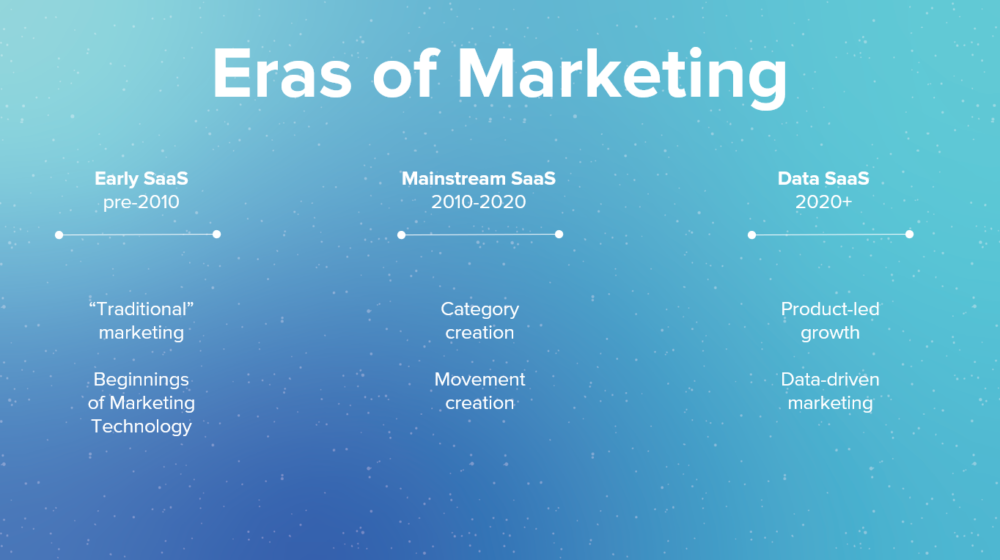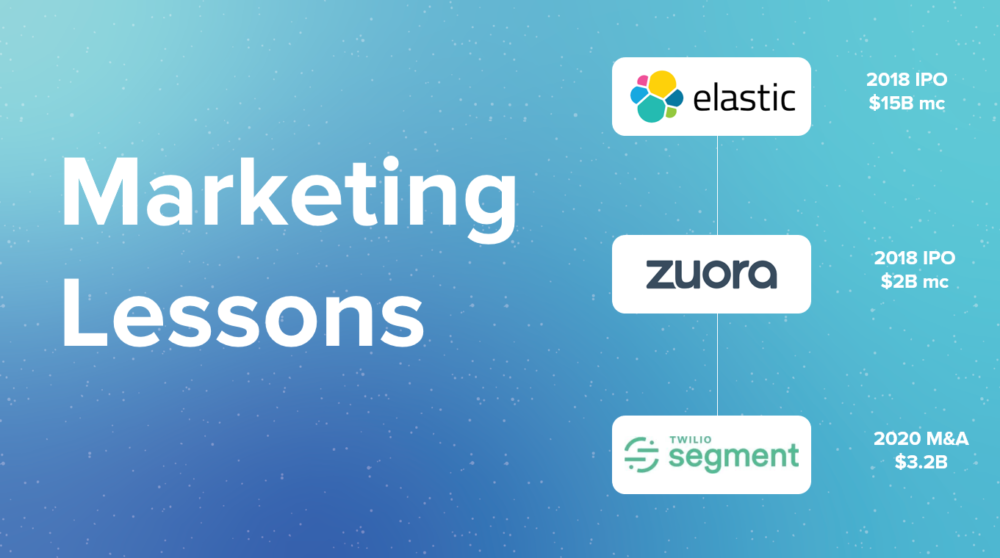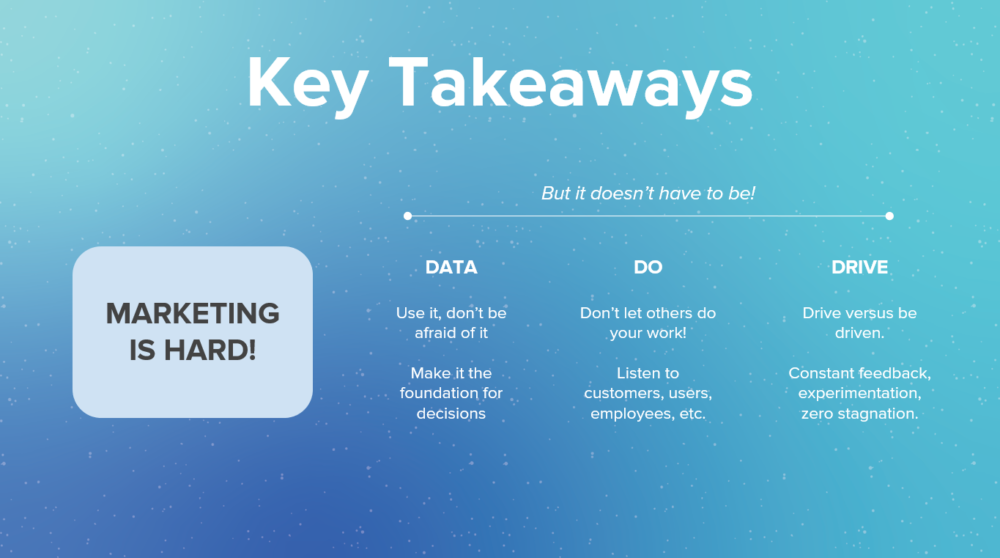In the early days of SaaS, it was difficult to predict how users would interact with new products. Only a few tools could understand new users early within a customer base.
Now, however, the focus is on product-led growth. Teams finally have a better way to instrument their marketing stacks and understand customer interaction.
Jeffrey Yoshimura, CMO and CXO at Snyk, Asawari Samant, Head of Marketing at Anyscale, and Katrina Wong, VP Marketing and Demand Generation at Segment, delve into their decades of combined experience to discuss the nine marketing lessons they have learned that lead to hypergrowth.
1. Category creation takes persistence and patience.
It is vital to understand why you are launching a category creation initiative. Disrupting existing categories can be difficult, so you need to be intentional with your strategy. Here are some things to consider:
- Listen to your customers and pay attention to the market signals.
- Do not try to create a category because it’s trendy.
- Begin with the user in mind and figure out how you uniquely solve their challenges.
- Do not be afraid to pivot. Market demands may force you to shift from your original idea.
“When you think about creating a category, it’s about doing it for the right reasons and really listening to your customers versus just charging ahead” – Katrina Wong
2. Be pragmatic and keep things simple.
In order to find effective solutions for your business, break challenges down to the basics. Start with your company’s mission—their “why”—as the foundation for all decisions you make. Use it to develop a hypothesis about what will work and turn it into a data-driven program. This strategy will give you solid evidence of what is most effective for your team.
3. Use data to lead the way.
Data is essential. Every step of the customer acquisition funnel must be measured and studied. You can instrument this entire funnel to iterate and discover what ultimately works. This is especially true for product-led growth companies that rely on data to understand uptake and revenue.

4. A/B test your concepts first.
We recommend doing small experiments and iterating before launching a full-scale plan. Testing allows you to avoid spending time on projects that have not been proven. Decide upfront how you will measure success, then trust the results.
A larger business, however, may have less appetite to spend on innovation. Idea generation is still crucial because you do not want to risk channel fatigue. Encourage your teams to innovate and give them the space to do so without penalty.
5. Allow open source community to be a force multiplier.
Our teams thrive on community engagement. A successful community can increase the results of your product by focusing on engaging with users. You can do this by creating community and developer advocacy teams that enable the community to succeed. This focus eliminates any friction they have when trying to access the value of your product. Utilizing these strategies can help build a flywheel of success to maximize your company’s ability to have more paying customers.
“The mandate for community and developer relations needs to be about community success and community growth.” – Asawari Samant
6. Use agencies to outsource your execution, not your thinking.
Agencies can help elevate your concepts, but they should not be in charge of your core thinking. The true ideation of what your company does should still come from the founders and executive team. Their insights will help craft the right story. Agencies should only be used as an execution arm to amplify your message.
“As you think about agencies, consider what you own and what you outsource.” – Jeffrey Yoshimura

7. Create an as-is / to-be framework to guide customers.
Many frameworks exist to build messaging and sales enablement. But what resonates with customers the most is simply painting a picture of the current state, then positioning what the future is. This approach enables the effects of proposed changes to be understood before they happen. Without showing customers what your product, service, or solution will look like in the future, it is hard to close the sale.
8. Measure and attribute everything, not just pipeline.
Pipeline metrics should not be your sole focus. As marketers, what we do impacts the entire funnel. Consider these factors:
- Customer lifecycle. Many companies are great at bringing in prospects and closing the deal but have churn issues later. To avoid this, focus on enhancing the entire customer lifecycle rather than just your pipeline.
- SEO. Analyze your organic traffic and consider how you can create content to meet your goals. Once you have that traffic, measure everything through the entire funnel.
- Leadership education. Your executive team and leadership board should understand that many different actions lead to a conversion. Make sure all your conversion data corresponds with the correct campaign to ensure you know what is driving revenues.
- Net Expansion Rate. We should invest in growing the new base and facilitating company expansion. Investors are also interested in NER, making it essential for marketers to understand.
9. Create digestible, repeatable recipes
Recipes are just repeatable motions, so start small and see what works. Focus on automating it so that it runs like a well-oiled machine. It can then be scaled to add more efficiency to your process. In the end, it is about creating repeatable tasks based on what is successful for your users or customers.
“Forget all of our other tactics–by far recipes convert well, and people ask for more. That engagement is huge.” – Katrina Wong

Key takeaways
To get the most out of your goals, you should never be an island. Engage with your customers, users, employees, and other key stakeholders for valuable insights. Ensure that the information you collect cascades down with input from other teams backed by decisions rooted in data-driven strategy.
Marketing is hard, but it does not have to be. Your work is more than branding or beautiful signage—it is about building a learning culture and mechanizing it.
The post Marketing Secrets to Hypergrowth from Building Elastic, Zuora, and Segment (Pod 534 + Video) appeared first on SaaStr.
via https://www.aiupnow.com
Amanda Beaty, Khareem Sudlow
